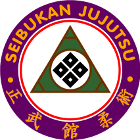History of Seibukan Jujutsu

“By bringing awareness and freedom of individual expression through the path of Seibukan Jujutsu, each person has the opportunity to reach their highest potential and achieve self-mastery.”
Seibukan Jujutsu
Julio Toribio Kancho studied and achieved the highest rank in Hakko Ryu Jujutsu. He was aware that times had changed and arts need to evolve. Toribio Shihan could no longer continue the path of the old traditions and strict rules. Faced with different challenges than those of the samurai days, different tools were required. His desire to continue learning, training and being creative, prompted him to combine his knowledge, and adapt those skills into what is now Seibukan Jujutsu, an art and path for modern times.
At the age of 13, Toribio Kancho began his studies of martial disciplines. Among the various Japanese Systems he studied and achieved Black Belt levels in: Okinawa Kempo Karate, Aikido, Hakko Ryu Jujutsu, Bujinkan Budo Taijutsu/Ninjutsu and Enshin Itto Ryu Battojutsu. He served as a US Army Airborne Ranger and taught hand to hand combat. Toribio Kancho has also studied various healing arts, including Combat First Aid, Physical Therapy, Nursing, Koho Shiatsu and Massage. He has vigorously sought exposure to numerous martial disciplines, spiritual paths and grappling arts. Among those are: Jujutsu, Judo, Ninjutsu, Daido and Aikido from Japan; Haw Rang Do, Kuk Sool Won and Hapkido from Korea; Chin Na, Tai Chi and Shuai Chiao from China; Arnis and Eskrima from the Philippines; and the most ancient of all, Kalaripayit from India. All these and more have contributed to the formation and development of Seibukan Jujutsu.
Seibukan Jujutsu is an effective and practical martial art developed for self-protection as well as personal development. Based on ancient tradition, Seibukan Jujutsu has been developed to meet the needs of the modern day warrior. Its Japanese roots, and the Seikendo healing art, make it unique among other systems. The name, Seibukan Jujutsu, describes the art. Seibukan means (Sei= correct, Bu= martial, Kan house) the house of correct martial arts. Jujutsu means (Ju= flexible, Jutsu= art) flexible art. Seibukan Dojo means the house of correct martial arts training hall.
The physical and self-defense aspect of Seibukan Jujutsu emphasize defense against armed and unarmed, single and multiple assailants. Gun, knife, club, rope, sword, long and short sticks are some of the weapons used in Seibukan Jujutsu to teach disarming techniques. The Taijutsu, or unarmed techniques, teach escaping, throws, chokes, grappling, join locking, counter techniques, and ground defense. The effective and practical application of the art are preceeded by learning and using: pressure points, kicks, and strikes to the body as distractions or to properly control and subdue an attacker. As a result, the students are conscious of avoiding unnecessary injuries.
Seibukan Jujutsu consists of twelve levels of study. The first five are Kyu levels. These levels are preparation to become a black belt. During this time, students find their own pace of learning, and setting and achieving goals thorugh practice of Awareness, Assesment, and Action. The last seven are Dan levels. These are the black belt levels. In a progressive way, each level as a theme, self defense techniques, and self development concepts to study and put in practice. Each black belt level consists of it’s own unique Kata (prearrange techniques with a partner), principles, and many unarmed and disarming applications.
Back to Seibukan Jujutsu Portal.
